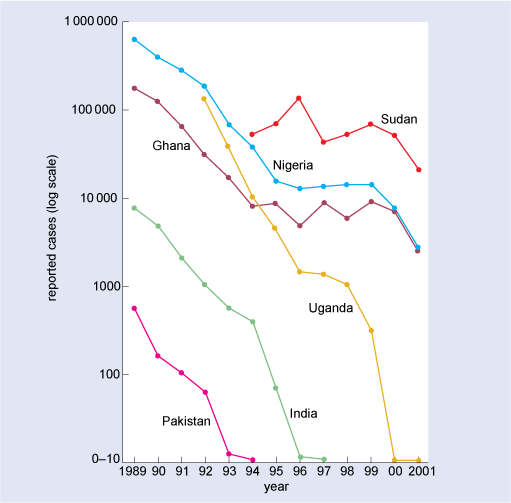5.2 Falling trends in guinea worm disease
Recognition of the seriousness of the guinea worm problem led the Indian government to initiate the first national dracunculiasis-elimination programme in 1982.
Similar programmes began later in Pakistan, Cameroon, Ghana and Nigeria, and in 1989 the WHO launched the global eradication campaign. The features of the campaigns will be described shortly but, for the moment, we will concentrate on the evidence of their success. The reduction in transmission of guinea worm disease in the first decade of the global campaign is illustrated by Figure 19.

Eradication in Pakistan was certified by the WHO in 1993, and India followed in 1996. It took several more years before it was eradicated in Uganda (2003), Nigeria (2008) and Ghana (2010) – bringing the total to 187 previously endemic regions and territories certified as free of dracunculiasis by the end of 2010.
In the whole of 2010 there were 1797 reported cases of the disease worldwide, and the number fell to just 1058 cases in the whole of 2011 in only four countries – Chad, Ethiopia, Mali and South Sudan (WHO, 2012j).
The community actions that have interrupted guinea worm transmission so successfully can only be understood by first describing its complex life cycle.
